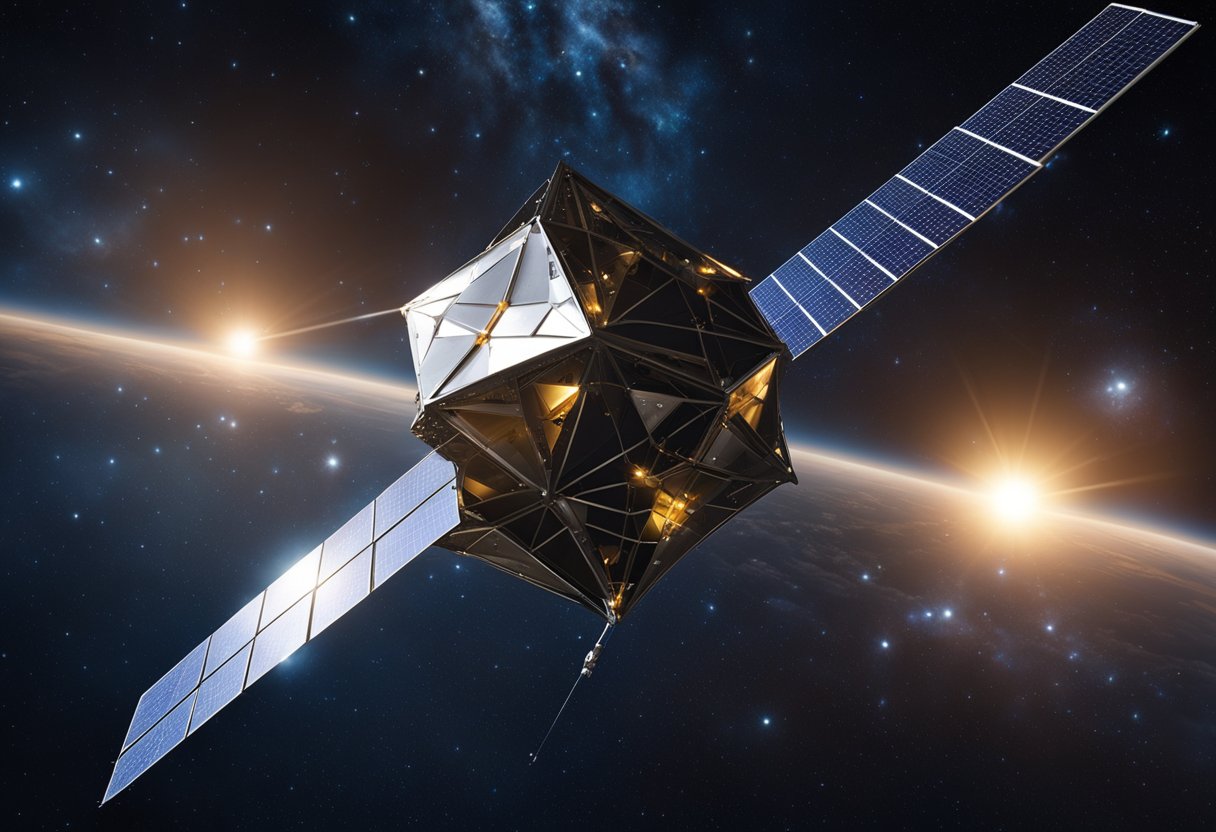
Within the realm of space exploration, solar sail spacecraft stand out as a transformative approach to propulsion. Unlike traditional rockets that require fuel, solar sails harness the momentum of sunlight itself. This concept, which might seem reminiscent of the sails of seafaring ships, relies on the physics of light. When photons from the sun strike a highly reflective sail, they impart a small but continuous thrust. Over time, this can propel a spacecraft to considerable speeds, enabling long-duration missions without the need for on-board propellant.
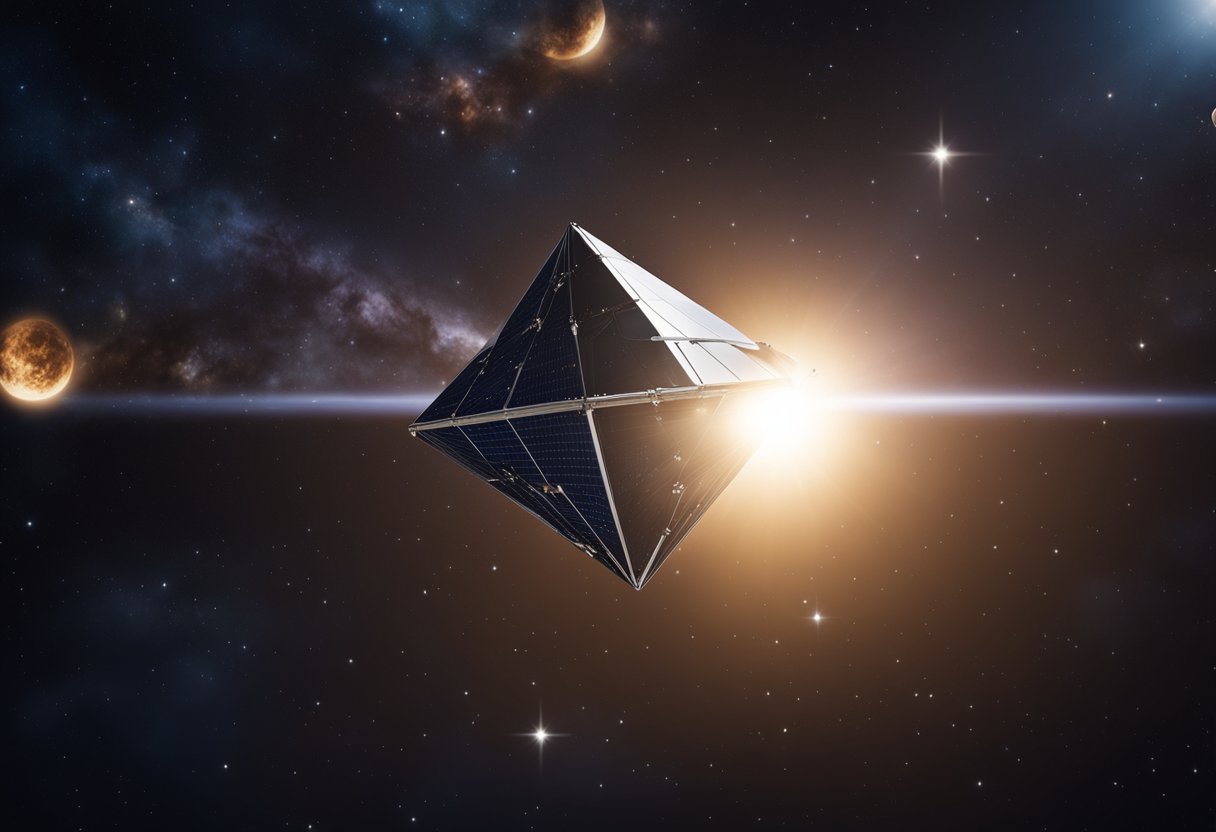
The potential for solar sails is not merely theoretical. In recent years, technology has advanced to the point where actual missions have been successfully tested and more ambitious projects are under development. The efficiency of solar sails makes them particularly suitable for certain types of missions, such as those requiring long-term studies of celestial bodies or those venturing beyond our solar system. The idea is to extend our reach into space in a more sustainable and cost-effective way. Furthermore, as space agencies and private entities invest in this technology, the futuristic vision of solar sail spacecraft could become a central part of humanity’s space exploration toolkit.
Solar sails harness the momentum of sunlight for propulsion, providing a unique means of spacecraft travel without the reliance on traditional fuel sources. This innovative approach utilises large, reflective sails to capture the momentum of photons from the Sun.
Solar sails operate on a simple yet profound principle: momentum from sunlight can propel a spacecraft. When photons, or light particles, emanate from the Sun, they exert a small amount of pressure upon striking a surface. Although this pressure is minimal, in the vacuum of space, it accumulates over time and can propel a solar sail to appreciable speeds. By adjusting the angle of the sails relative to the Sun, we can steer a spacecraft, much like sailors on Earth manoeuvre a boat by aligning its sail with the wind.
The technology behind solar sails involves large, lightweight, highly reflective materials. To function effectively, these materials must be expansive yet thin, capturing as much sunlight as possible while minimising the spacecraft’s overall mass. Reflective metals such as aluminium are often chosen for the sails due to their ability to reflect sunlight effectively. The sail is attached to a central spacecraft, which houses instruments and communications equipment. Our advancements in materials science and nanotechnology are continually improving the efficiency and capabilities of solar sails, making them a more viable option for various space exploration missions.
In our journey through the evolution of solar sail spacecraft, we encounter groundbreaking ideas and significant technical milestones that have paved the way for using light as a means of propulsion in space.
The idea of using light for propulsion dates back to the early 20th century. Notably, Svante Arrhenius suggested in 1908 the intriguing possibility that solar radiation pressure could be a means of dispersing life spores across interstellar spaces, opening doors to the concept of panspermia. This marked the first acknowledgment that light could potentially power interstellar movement. Adding to the dream of harnessing light for space travel, Arthur C. Clarke, a visionary science fiction author, introduced many readers to the concept of solar sailing in his writing.
Our understanding and technology have evolved dramatically since these early conjectures. NASA’s Marshall Space Flight Center has been at the forefront of solar sail development. They’ve been working on perfecting the materials and mechanisms that make solar sails a reality. Notably, the resemblance of solar sail operation to that of a sailboat on water has helped in conceptualising and communicating the science behind solar propulsion. Just as wind moves a sailboat, solar sails rely on the photon pressure from sunlight to move through space.
Our progress in the field of solar sailing represents a blend of science and imagination, paving the way for innovative space exploration methods. This technology’s potential extends beyond traditional propulsion systems, hinting at a new era in space travel and, perhaps one day, serving as the basis for spacecraft listed on pioneering sites like SpaceVoyageVentures.com, where the future of space tourism is taking shape.
In this section, we’re discussing the intricate details of solar sail spacecraft, focusing on the materials and structure that make them unique and the key challenges engineers face during their design.
Solar sails harness the momentum of photons from the Sun, requiring materials that are both highly reflective and lightweight. Carbon fibre is often utilised for its strength-to-weight ratio, making it an excellent choice for the structural components of the sail. These fibres provide the necessary tensile strength whilst minimising mass, a critical aspect of efficient spacecraft design.
The sails themselves are typically made from thin, reflective materials capable of capturing solar photons. Engineers have been exploring the use of reflective and diffractive materials that can effectively manipulate the solar radiation pressure for propulsion. The deployment mechanism of the sail must unfurl these large, delicate structures reliably in the harsh conditions of space.
Engineering a solar sail spacecraft poses unique design challenges. Minimising mass while maintaining structural integrity is paramount to maximise acceleration from solar radiation pressure. Engineers must ensure the sail is not only reflective but also diffractive to optimise the propulsion mechanism.
Spacecraft design must also factor in the thermal distortion that can occur as the spacecraft moves closer or further away from the Sun. Advances such as those in the Advanced Composite Solar Sail System have led to materials that are much less susceptible to this distortion, with composite booms that are significantly lighter and more resistant to heat-induced shape changes than their metallic predecessors.

As we explore the frontiers of space technology, solar sail spacecraft represent a leap forward in propulsion. We are witnessing the dawn of this innovative era with operational missions currently showcasing the technology’s potential and future applications that promise to expand our reach in the cosmos.
IKAROS (Interplanetary Kite-craft Accelerated by Radiation Of the Sun): Launched by the Japan Aerospace Exploration Agency (JAXA) in 2010, this spacecraft became the first successful demonstration of solar sail technology in interplanetary space.
LightSail 2: Developed by The Planetary Society, this mission has been operational since 2019. It’s a small CubeSat that aims to demonstrate controlled solar sailing in Earth orbit.
Solar Cruiser: With an anticipated launch in the near future, Solar Cruiser is expected to be a mission that will further test the capabilities of solar sails, pushing the boundaries of how we propel crafts through space.
Space Tourism: Our organisation, SpaceVoyageVentures.com, is meticulously documenting the potentials of solar sails for space tourism, shedding light on both current and soon-to-be-available interplanetary trips.
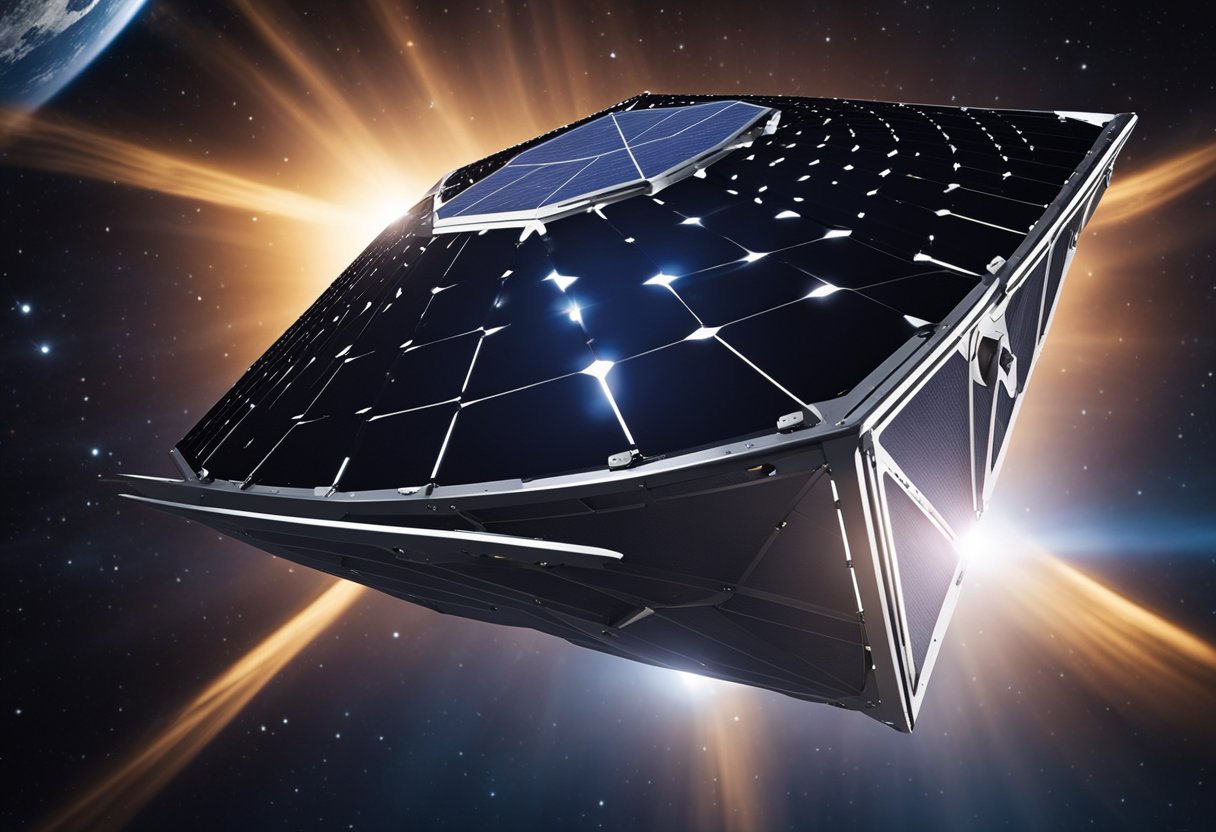
In solar sail spacecraft design, navigation and control are pivotal for operational success. We shall explore the methods of tacking for maneuvering and the technology enabling autonomous navigation.
Solar sailing allows spacecraft to harness light particles for thrust, but controlling their paths requires intricate tacking strategies. Like their maritime counterparts, solar sails can tack against the direction of sunlight to adjust their trajectory. Maneuverability of solar sails is a fine art; by angling the sails relative to the Sun’s photons, we can change the craft’s direction efficiently. The Japanese Exploration Space Agency’s IKAROS spacecraft showcased this, having engaged in solar sailing to study Venus and the Sun.
Autonomous spacecraft must integrate advanced algorithms and sensor technologies to navigate the cosmos without human intervention. Utilising on-board systems, solar sails can autonomously determine their position relative to the Sun and nearby celestial bodies, adjusting their sails accordingly. This level of autonomy in navigation is critical in missions like NASA’s Breakthrough Space Exploration strategies, where solar sails may enable low-cost pathways to high-speed interstellar travel.
In exploring the potential of solar sails for spacecraft propulsion, we must consider key factors that influence their performance.
Radiation pressure is a critical factor for the operation of solar sails. This pressure is the force exerted by solar radiation when photons collide with the sail’s surface. Since the force is proportional to the sail’s area and the reflectivity of the material, our choice of material and the design of the sail contribute significantly to the resulting thrust. The sun provides a constant stream of photons, which allows a solar sail to gradually build up speed over time. This thrust can be manipulated by adjusting the sail’s angle to the solar radiation, altering the spacecraft’s orbit without the need for conventional propellants.
The space environment also has a notable impact on solar sail performance. Factors such as micrometeoroids, cosmic radiation, and temperature extremes can affect the material integrity and, therefore, the sail’s effectiveness. Prolonged exposure to solar radiation can degrade materials, while space-borne particles can puncture the thin sail material, potentially compromising its structure. Our understanding of heliophysics informs the design of sails to withstand these harsh conditions, ensuring long-term operational capability.
By considering these aspects of radiation pressure and the space environment, we can enhance the reliability and performance of solar sails as an innovative propulsion technology.
We find that the development of solar sail technology holds transformational potential for both scientific enquiry and practical endeavours in space. Solar sails offer a unique method of propulsion that doesn’t require fuel and can potentially provide continuous thrust to a spacecraft. Here, we will explore two critical applications: deep space exploration and the study of near-Earth objects.
Solar sails harness solar radiation pressure for propulsion, which can enable spacecraft to venture into the far reaches of the solar system and possibly into interstellar space. By employing solar sails, we anticipate spacecraft to undertake prolonged missions, journeying beyond the traditional bounds of space exploration. A prime example is the discussed concept of using solar sails for missions that could extend Earth’s capabilities in polar detection and actively explore celestial frontiers.
Solar sails also offer promising solutions for studying near-Earth asteroids and comets. These bodies pose both potential threats and opportunities for Earth. The ability to reach and closely examine these objects can provide invaluable data about the origins of the solar system and enhance our planetary defence strategies. For instance, continuous thrust capabilities accentuate the validity of using solar sails to maintain a spacecraft’s position relative to a near-Earth object, thus facilitating long-duration observations and analyses.
In our analysis of solar sail spacecraft, we find notable advancements particularly in miniaturisation and material science, as well as in advanced propulsion systems. These have significant ramifications for the efficacy of solar sails and their potential roles in both deep space exploration and early space tourism ventures like those documented by SpaceVoyageVentures.com.
Miniaturisation has transformed spacecraft design, exemplified by Berkeley researchers utilising micro-scale technology to revolutionise solar sails. The incorporation of MEMS (Micro-Electro-Mechanical Systems) and innovative materials enables significant reductions in size and weight. This allows for more efficient packing and deployment mechanisms, crucial when considering the limitations of space and mass onboard launch vehicles.
The advancement in material science has also been essential, with the development of incredibly thin, yet durable, materials for solar sails. Techniques such as diffractive solar sailing rely on these materials to harness the pressure of sunlight for propulsion without the need for fuel, much like a ship uses wind to navigate the seas.
The concept of advanced propulsion stems from the ability of solar sails to convert pressure from sunlight directly into thrust. However, it’s the enhancement of this thrust through innovations like diffractive elements that significantly boosts the system’s capability. Such technological triumphs allow us to envision solar sails pushing spacecraft to vast distances at speeds otherwise unattainable by conventional means.
Through these technological innovations, we are poised to broaden our horizons beyond established frontiers. The solar sails in development today not only promise to expedite scientific discovery but also offer a glimpse into a future where space voyage may transition from exploration to an aspect of everyday life, especially as we progress towards making space tourism a reality.
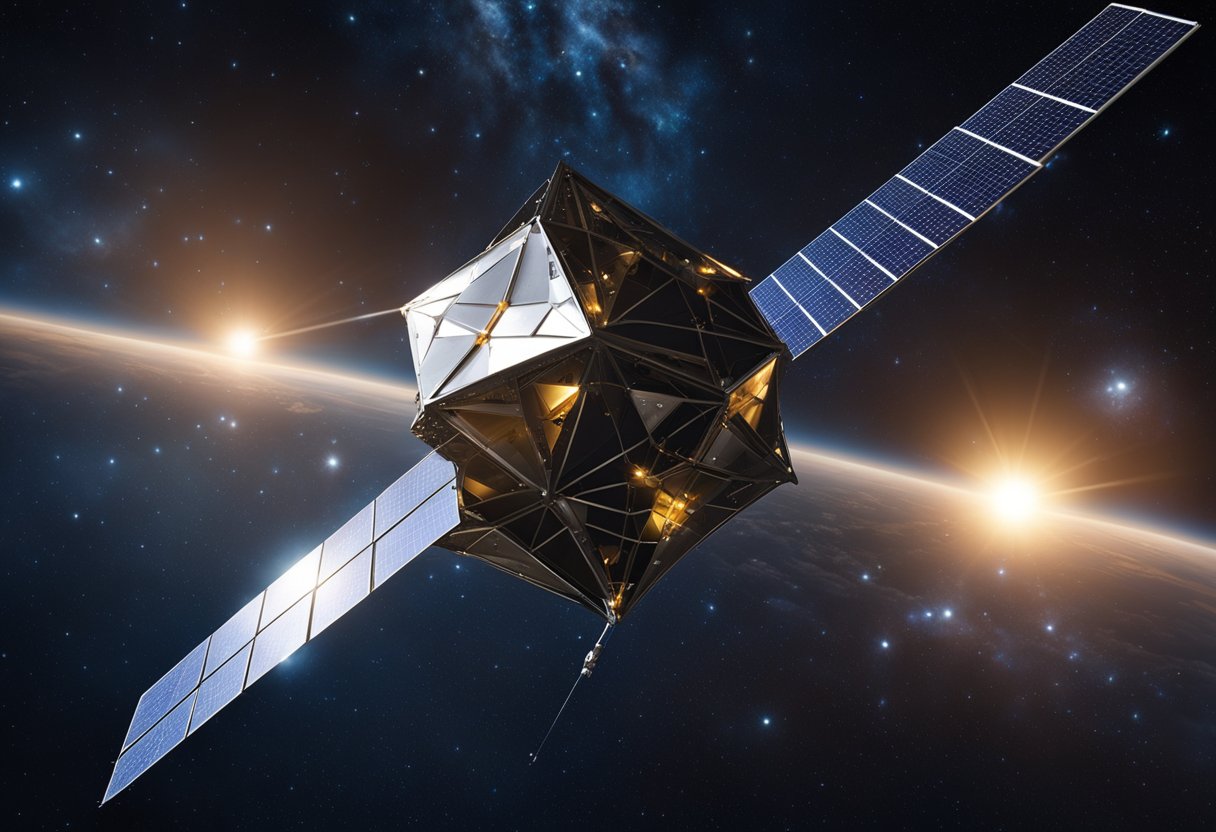
While solar sails promise a transformative approach to space exploration, their practical application faces several hurdles. Our discussion centres on the inherent technical difficulties and the economic and logistical considerations that play crucial roles in the realisation of solar-sail-equipped spacecraft.
Materials and Design: Crafting solar sails demands materials that are both incredibly thin and robust. They must endure the harsh vacuum and radiation in space whilst maintaining reflective properties and physical integrity.
In-Space Navigation: Solar sails operate on the principle of solar radiation pressure, which is exceedingly weak. As such, their acceleration is gradual, requiring precise control for manoeuvring, particularly in regions bereft of sunlight where they cannot function efficiently. Our spaceflight endeavours must find solutions to navigate in shadowed areas where propulsion from solar sails is not available.
Low Thrust: The low thrust generated by solar sails results in slow initial velocities. We must carefully plan missions to accommodate the prolonged timescales needed for acceleration.
Cost-Effectiveness: Our goals align with achieving lower-cost access to space. However, the current lack of high-volume production for solar sail technologies can drive up expenses. Solar sail missions must be designed with cost-effective strategies in mind that do not compromise on the technological advancements required.
Logistics: The manufacture and deployment of solar sails involve competent handling of ultralight, expansive materials. Ground test programs have to simulate space conditions, an endeavour that often requires substantial investment and innovation.
By addressing these concerns with ingenuity and persistence, we push the boundaries of what is achievable in our quest to harness solar sails for sustainable and efficient space exploration.
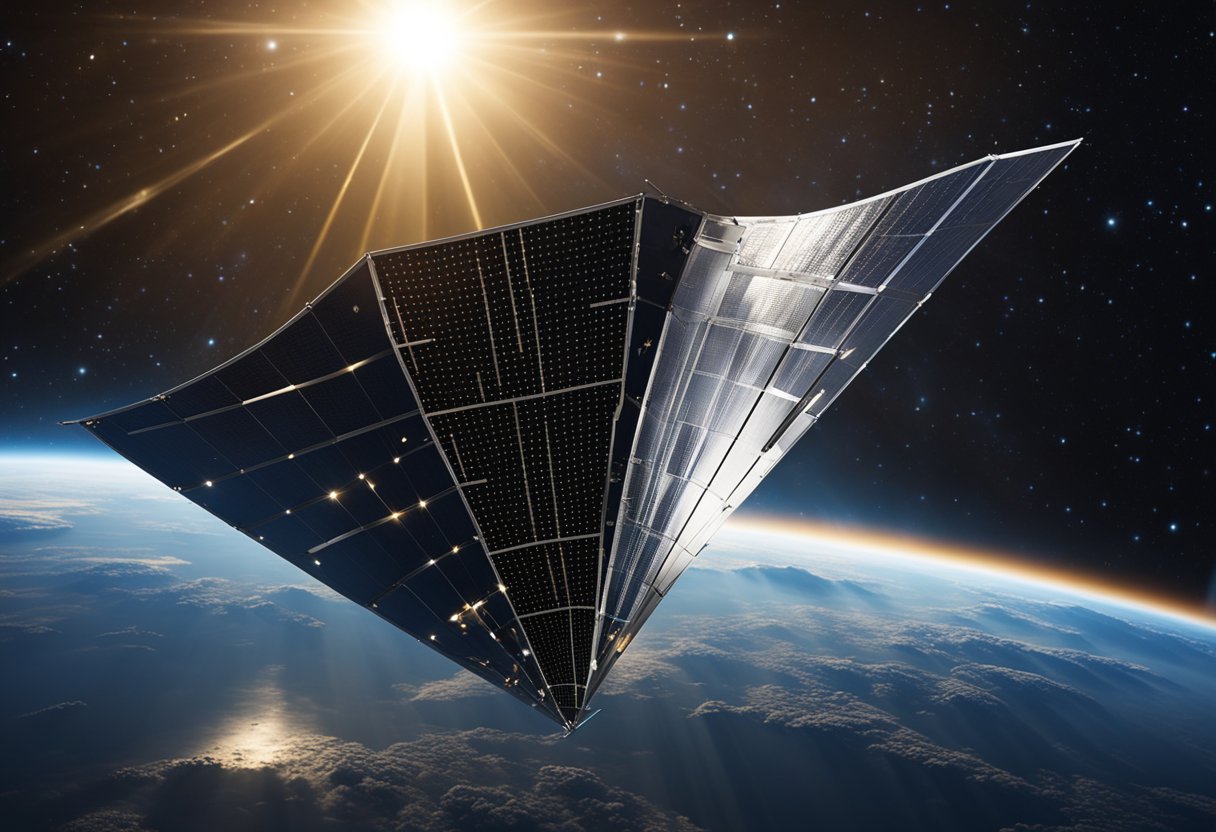
Our exploration of the solar system and beyond has always been buoyed by cooperative endeavours stretching across borders and sectors. In the realm of solar sail technology, this manifests through robust international and academic partnerships, as well as dynamic alliances between the private and public sectors, forming a synergy that propels our collective cosmic ambitions forward.
The Planetary Society has pioneered the development of solar sailing through missions like LightSail 2, enhancing our understanding of solar propulsion. With crucial academic collaboration from institutions like the University of California, these projects not only advance our grasp of space travel mechanics but also fling open the windows of opportunity for missions to Mars and other celestial bodies.
Our work in line with the Space Technology Mission Directorate involves creating pathways to utilise solar sails for future interplanetary exploration, fostering research that will inevitably benefit the larger spacefaring community. Individuals like Les Johnson, a prominent figure in solar sail technology, play a pivotal role in nurturing the relationships that make such innovative leaps possible.
Ventures in solar sail spacecraft potential have been greatly accelerated by the concerted efforts of both private entities and government agencies. Companies like SpaceVoyageVentures.com, while still in their formative stages, are instrumental in sketching the outlines of our space tourism future. Their documentation of emerging opportunities for cosmic travel lay the groundwork for how solar sails might one day support space tourism, making the stars accessible to us all.
As we continue to marshal our resources and intelligence, it’s clear that the marriage between the tenacity of private firms and the structured support of public institutions is critical. Through these partnerships, solar sail spacecraft stand on the cusp of transforming interplanetary travel, weaving our aspirations into the fabric of space exploration history.

In this section, we address some of the key inquiries about the potential of solar sail spacecraft. Our aim is to provide clear and factual information based on current research and understanding.
Solar sails harness the momentum of photons from sunlight, which exert a small push against large mirrored surfaces. This photon pressure provides continuous acceleration, allowing the spacecraft to increase velocity over time without the need for traditional fuel.
The velocities attainable by solar sails are primarily limited by the duration of acceleration and the distance from the sun. Solar sails can theoretically reach speeds sufficient for interplanetary travel, with ongoing research suggesting the possibility of reaching a significant percentage of the speed of light for interstellar missions.
Solar sails require materials that are both highly reflective and extremely lightweight. Mylar or other thin polymer materials coated with a reflective layer are often used. These materials must also be durable enough to withstand the harsh environment of space.
Solar sails are considered highly viable for long-distance space travel due to their ability to propel spacecraft without the need for on-board fuel. Over time, they can reach high velocities, making them suitable for missions beyond our solar system given sufficient travel time.
Although it is a challenging endeavour, solar sails have the potential to reach neighbouring star systems like Proxima Centauri. Achieving this would require significant advancements in material technology and navigation, as well as a propulsion technique known as beamed propulsion where ground-based lasers provide additional momentum.
The thrust generated by solar sails is quite low compared to conventional rocket engines, typically on the order of a few newtons per square kilometre of sail. However, because the thrust is constant and can be sustained indefinitely, the cumulative effect can eventually propel a spacecraft to high speeds.